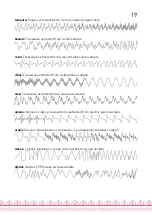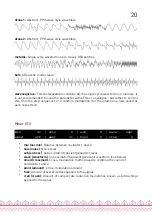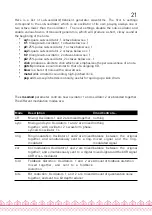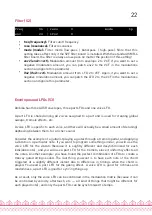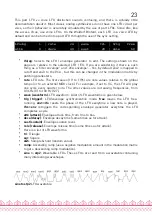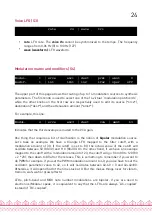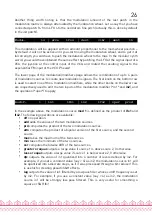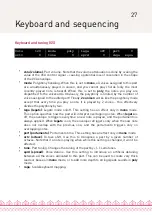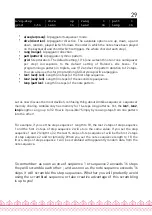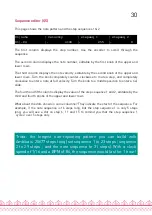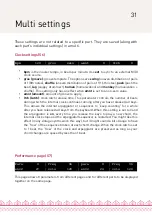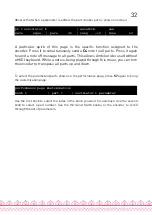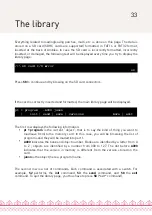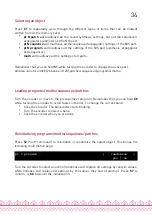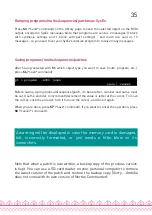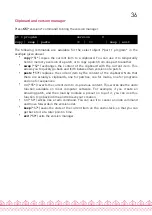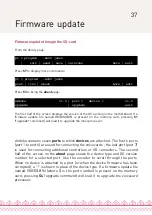
Filter (S2)
Freq 96
| reso 0
mode lp
env 24
| lfo2 0
•
freq (frequency):
Filter cutoff frequency.
•
reso (resonance):
Filter resonance.
•
mode (mode):
Filter mode (low-pass / band-pass / high-pass). Note that this
setting takes effect only if the SVF filter board is installed. With the standard SMR-4
filter board, the filter is always a low-pass no matter the position of this setting!
•
env2 (env2
>>
vcf):
Modulation amount from envelope 2 to VCF. If you want to set a
negative modulation amount, you can patch env2 to the VCF in the modulations
section and ignore this parameter.
•
lfo2 (lfo2
>>
vcf):
Modulation amount from LFO 2 to VCF. Again, if you want to set a
negative modulation amount, you can patch the LFO 2 to the VCF in the modulations
section and ignore this parameter.
Envelopes and LFOs (S3)
Ambika has three ADSR envelopes, three part LFOs and one voice LFO.
A part LFO is shared among all voices assigned to a part and is used for creating global
sweeps, tremolo effects, etc.
A voice LFO is specific to each voice, and there will actually be a small amount of detuning/
dephasing between them, for a richer sound.
Consider the example of a guitarist playing a guitar through a tremolo pedal, and applying
a vibrato on a particular note. If you want to program something similar, you will use the
voice LFO for the vibrato (because it is slightly different and desynchronized for each
individual note) ; and you will use a part LFO for the tremolo, since it uniformly affects all
the notes. Another example: you have found the perfect combination of LFOs to create a
trancey gated strings sound. The last thing you want is to have each note of the chord
triggered at a slightly different instant due to difference in timings when the chord is
played. You need a part LFO for the gating effect. A voice LFO is good for richness and
randomness, a part LFO is good for sync’ing things up.
As a result, only the voice LFO can be controlled in the modulation matrix (because it can
be controlled by velocity, aftertouch, etc. — all kind of things that might be different for
each played note) ; and only the part LFOs can be synchronized to tempo.
22












